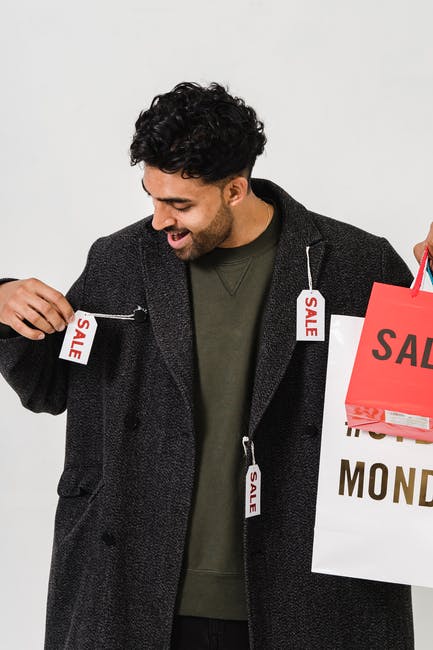
The Complete Guide to Glitch Deals
After TV networks took to following so-called “extreme couponers” as they shopped, viewers began to wonder if extreme couponing was really possible. As it turns out, there were televised moments that weren’t exactly realistic. (In other words, they were faked or scripted.)
That being said, there are ways that consumers can get the better of your business. It doesn’t happen often and it’s hard to catch when it does, but glitch deals do occur from time to time.
What are glitch deals and how can they impact your business? Are glitch deals something you want to incorporate into your marketing strategy or something you should try to avoid?
Read on to learn everything you should know about glitch deals as a modern business.
Contents
What Are Glitch Deals?
Glitch deals typically occur when two or more “deals” are in play for the same product at the same time. In some cases, glitch deals occur when only one “deal” is active but has a few oversights. (These are not to be confused with price glitches, which refer to system or user errors that lead to the improper input of a product’s price.)
In most cases, glitch deals allow consumers to purchase a product at an extremely discounted price. Typically, shoppers who take advantage of glitch deals are going to purchase that product in bulk. This can occur because the consumer is more than happy to stock up at such a low price or because the glitch deal requires a large purchase of that product in order to work.
In rare cases, glitch deals can actually result in a business owing the consumer money–and products. If you’ve seen any of these extreme couponing shows we mentioned earlier, you’ve seen this in action.
Take a look at these glitch deals to get an idea of what glitch deals look like in action.
How Do Online Glitch Deals Work?
More often than not, glitch deals occur online.
One of the easiest ways a consumer can take advantage of a glitch deal is by voucher code stacking. In other words, your business may have a few possible vouchers floating around that provide discounts for your products. If you don’t place a limit on how many vouchers can be used per transaction or item, a consumer could stack enough that their product is free.
Another example of an online glitch deal is offering a voucher with no minimum purchasing requirements attached. Let’s say you offer a $10 coupon code but don’t limit it to purchases of $20 and over. If a consumer uses that code to buy something that costs $10, they’ve just gotten themselves a free product.
How Do In-Store Glitch Deals Work?
In-store glitch deals do occur, but they’re not quite as problematic for businesses as online glitch deals. This is, in part, because taking advantage of in-store glitch deals typically requires a membership card or multiple coupons, which many of your customers won’t have.
In-store glitch deals occur under two circumstances.
The first is that two different promotions are active simultaneously, although this typically only lasts for a day or two. For example, you may have offered a 2-for-1 deal on a product one week and a 2-for-$3 on the same product the next week. If those promotions coincide, consumers may find a way to up their savings more than you intended.
The second is that you offer a promotion on a product while a coupon is actively available for that product. The easiest way to avoid this is to only allow one method of savings or the other, but not all stores do.
Should You Worry About Glitch Deals?
So, should this concern you as a business owner? As you can see, glitch deals tend to result from some degree of oversight. Should you scour the internet for existing deals before putting your products on sale?
The reality is that while glitch deals could result in a substantial loss of profit, you don’t need to lose sleep over them. For starters, they don’t happen frequently—and if you notice them happening frequently, you may need to reevaluate your business model.
Glitch deals are also temporary. Most coupons come with expiration dates and planned promotions have a start and end date. Even if there is hype created around a glitch deal created by your business, it won’t last long enough to create a permanent impact.
Finally, most shoppers love a good deal but won’t go that far out of their way to get products for free. In other words, most consumers won’t even notice glitch deals when they do occur.
Are There Times When You Should Embrace Glitch Deals?
So we’ve established that you don’t really need to worry about glitch deals. Are there ever times when you should actually create them on purpose?
When glitch deals are well-publicized, they can attract a lot of attention. A well-timed and planned-out glitch deal could work in your favor as a way to promote your business and your products.
Glitch deals are also a good way to get rid of stock you don’t want to hang onto. Offering crazy discounts can convince thrifty shoppers to clear your shelves of that seasonal item that’s taking up too much space on your shelves or in your inventory.
Don’t Let the Glitch Deals Catch You By Surprise
If you’re a business owner, it’s worth noting that glitch deals do happen. They may not create a substantial financial impact on your business and you may even be able to take advantage of them! The most important thing is not to let glitch deals catch you by surprise.
Are you looking for ways to sharpen your marketing strategy? Take a look at our marketing section and find even more ways to attract tons of attention and create a lasting impact on your customers.


Comments are closed.